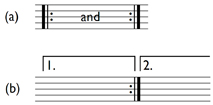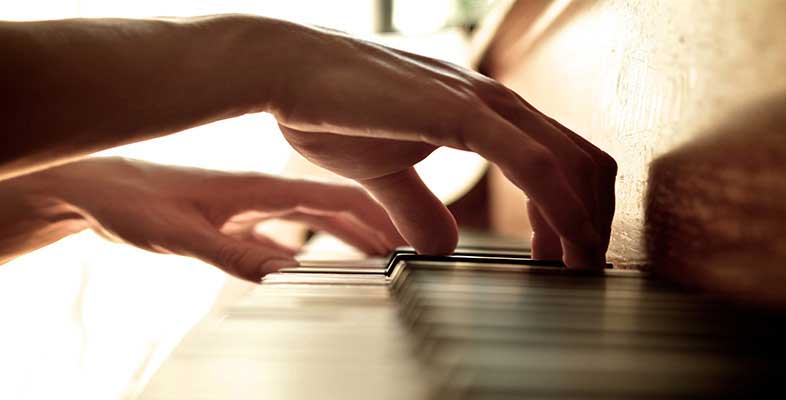8.2 Following piano scores
The music examples you have studied so far have been written on only one staff, and you have been able to hear the corresponding sounds for many of the examples. However, as you become proficient at reading music, you may want to tackle scores such as piano scores, where you need to be aware of two staves being used simultaneously. Furthermore, you may want to follow piano scores while listening to the music.
What does ‘follow’ mean in this context? Well, it certainly doesn’t mean that you have to register consciously every notated detail of the passage in the score as you listen. Rather, it means that you need to be able to synchronise in a general way what your eye is seeing on the score and what your ear is hearing in the music. At first, even that might not be possible. The relentless progress of the music might be too much for you to cope with. This is to be expected. Even at a basic level, following a score needs practice. You need to become familiar with the idea of scanning the notation as you hear the music, of focusing on the melody while being aware of the accompaniment, of identifying on the score points at which, for whatever reason, the music does something substantially different from what it had been doing previously.
In order to prepare yourself for following a score, think about the following:
- What is the extent of the passage you wish to follow? Glance through the passage quickly noting the opening and closing bars.
- What is the speed of the music? – see the tempo marking – and how many beats are there in a bar? – see the time signature.
- Are there any repeated passages? These will be marked in two ways, either (a) with repeat marks (if the player has to repeat a passage from the beginning, the opening repeat marks are omitted); or (b) first- and second-time bars (Example 64).
- Do you need to turn a page? If so, try to imagine what is happening in the music for a few bars after the page turn so that, when you turn, you are not caught out.
Example 64

